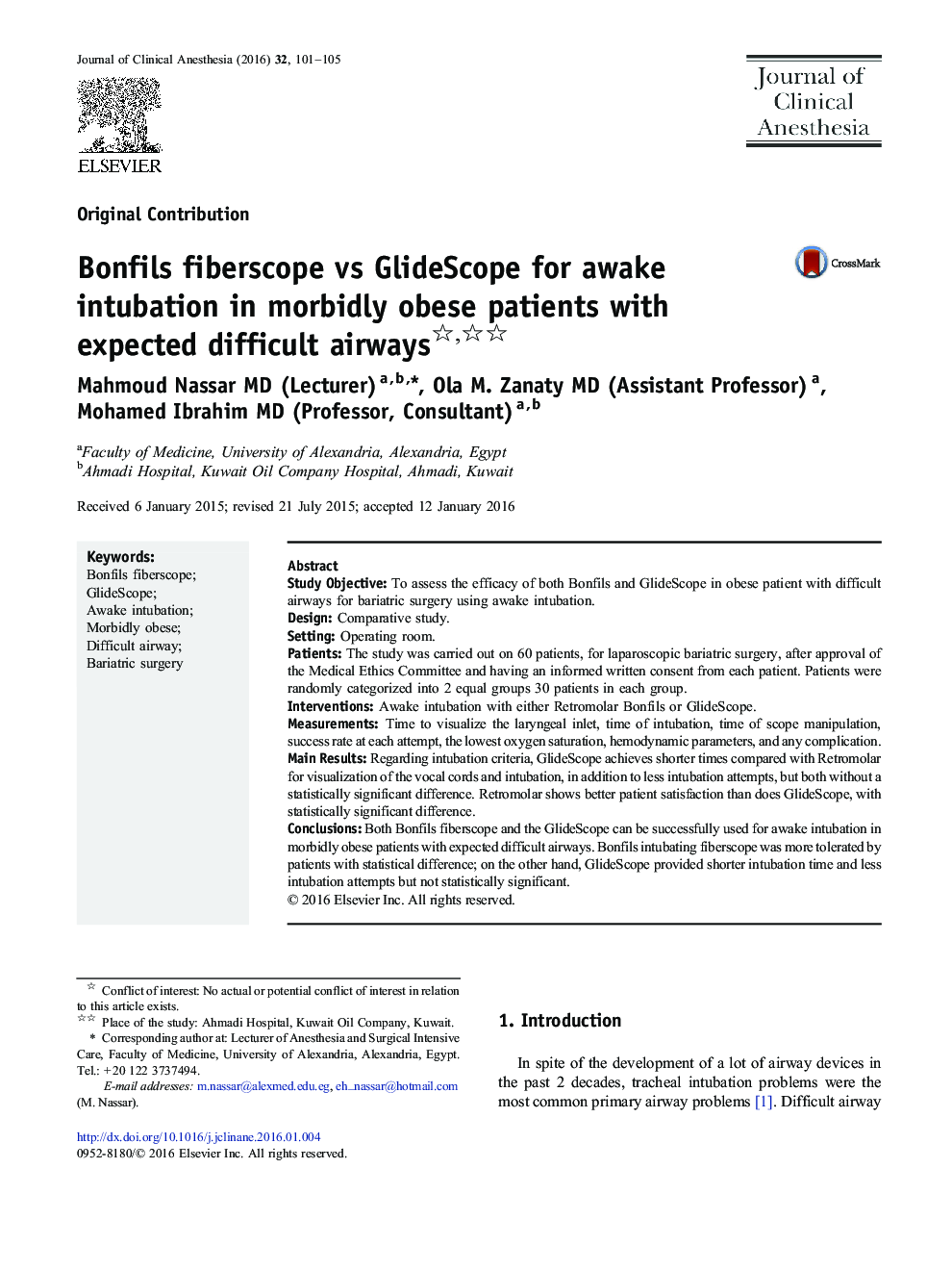| Article ID | Journal | Published Year | Pages | File Type |
|---|---|---|---|---|
| 5884785 | Journal of Clinical Anesthesia | 2016 | 5 Pages |
â¢Bonfils vs GlideScope in morbidly obese patients with expected difficult airwayâ¢Shorter times for visualization of the vocal cords and intubation for GlideScopeâ¢Bonfils showed better patient satisfaction than did GlideScope.â¢Bonfils and GlideScope can be successfully used for awake intubation.
Study ObjectiveTo assess the efficacy of both Bonfils and GlideScope in obese patient with difficult airways for bariatric surgery using awake intubation.DesignComparative study.SettingOperating room.PatientsThe study was carried out on 60 patients, for laparoscopic bariatric surgery, after approval of the Medical Ethics Committee and having an informed written consent from each patient. Patients were randomly categorized into 2 equal groups 30 patients in each group.InterventionsAwake intubation with either Retromolar Bonfils or GlideScope.MeasurementsTime to visualize the laryngeal inlet, time of intubation, time of scope manipulation, success rate at each attempt, the lowest oxygen saturation, hemodynamic parameters, and any complication.Main ResultsRegarding intubation criteria, GlideScope achieves shorter times compared with Retromolar for visualization of the vocal cords and intubation, in addition to less intubation attempts, but both without a statistically significant difference. Retromolar shows better patient satisfaction than does GlideScope, with statistically significant difference.ConclusionsBoth Bonfils fiberscope and the GlideScope can be successfully used for awake intubation in morbidly obese patients with expected difficult airways. Bonfils intubating fiberscope was more tolerated by patients with statistical difference; on the other hand, GlideScope provided shorter intubation time and less intubation attempts but not statistically significant.
